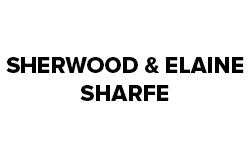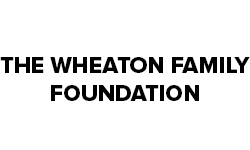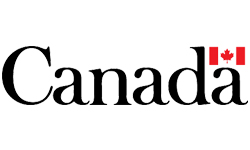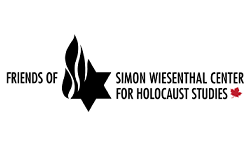Part B: Learning Plan
In this inquiry students will:
Analyze how decisions are made and explore various approaches to resolving conflict by:
- Understanding the different types of governance, their decision making process, and their responsibilities at the local and national levels; and,
- Exploring the relationships between beliefs, rights, and responsibilities on a school, community, and national level.
- Analyzing their rights and responsibilities within the community.
CITIZENSHIP STUDY
Curricular Outcomes
- Analyze how decisions are made within the local community. (PA2.1)
- Assess and practice various approaches to resolving conflicting interests within the community. (PA2.2)
Students will know how to make decisions, problem solve, and look for solutions to conflict in the community.
CURRICULUM OUTCOMES AND INDICATORS
Essential questions are posted and discussed with students at the start of the exploration of study. These open-ended questions are continually revisited; encompass concepts that students will explore throughout the unit of study; form the evidence of understanding; and, frame the assessment at the end of the unit of study. Guiding questions are posed to support student thinking as they explore the answers to the larger overarching questions.
Teachers may want to consider putting the questions into a “Before, During, After” chart to note the changes in students’ thinking as a result of the inquiries.
Essential Questions: Guiding Questions
- What makes a rule fair?
- Why might one person think a rule is fair and another think the same rule is unfair?
- Do rules have the same impact on every person?
- Why are rules different from place to place?
- Why would rules need to change based on their location?
- How do rules help people live peacefully together?
- Do rules help or hinder?
- How do rules change?
- Why would a rule need to change?
- What responsibility do citizens have to follow rules?
Vocabulary
- common good
- rule
- rights
- responsibility
- engaged citizen
- fair
- community stewardship
CONNECT TO TOPIC AND SURFACE STUDENTS’ THINKING ABOUT …
This section introduces the concepts and helps teachers gain an understanding of the current thinking of the class. Present essential questions and allow students to think about and talk about. Student answers will give teachers a baseline or beginning understanding of the amount of specific and incidental teaching required to explore these outcomes. Vocabulary is introduced and noted here. This section frames the “We do” portion of the lesson where teachers guide the initial structure of the inquiry.
Surface and note questions students raise during discussion. Identify additional vocabulary that needs to be developed.
Students will know how to make decisions and problem solve and look for solutions to conflict in the community.
Students belong to a number of groups that mirror the same structures as communities. Beginning with student groups and increasing the sphere of influence, list the groups that students belong to. Chart for future exploration. Within some of the student groups named, have students identify:
- Who makes the rules in this community/organization/group? Who has to follow the rules?
- What is the process for making rules?/How do they/does the group make the rules?
- What is taken into consideration when making rules?/What do the rule-makers need to think about when making the rules?
- Why would rules be considered fair/unfair?
- What happens when people disagree with rules?
- How does perspective or point of view influence how people view situations?/ Does everybody view the rules the same way?
- How are disagreements solved?
DEVELOPING UNDERSTANDING
This section is the core of the lesson. It describes the main activity(ies) involved. In inquiry-based learning, the teacher facilitates the activities that lead to the understandings that student make of the essential questions. It is critical then, that students be allowed to raise questions and talk about issues that develop as they explore the learning activities. This forms the “We do” “They do” section of the inquiry where students are finding answers to the overarching questions and then searching for themes and patterns as possible explanations.
Students will develop an understanding of community governments and how rules are made.
Divide students into groups. Refer to the brainstormed list and assign student groups specific organizations to research. Make sure list includes local governance bodies as well as social or sports organizations. Look for opportunities to have community decision-makers visit the classroom or have students interview decision-makers.
For each group identify:
- Leader of group and title (e.g., mayor, reeve, chief, Elders, community volunteers, coach).
- Responsibilities of the leader/What the leader does.
- How decisions are made:
- Local community organizations?
- Local community governance bodies?
- Have students represent their findings in a chart or concept web for comparison against the class developed chart.
- Note similarities and differences within the increasing sphere of influence.
- What are the similarities and differences?
- Why are there similarities? How does that support the groups?/society?
- Identify patterns in how communities/organizations organize themselves and who the decision makers are within those groups.
Chart the responses and have students look for see the similarities and differences.
APPLY AND EXTEND KNOWLEDGE
This section includes ideas to extend the inquiry or apply concepts explored. This section may also include additional reflective questions to promote student connection to the topic. This forms the “You do” section of the inquiry – may be “you do it collaboratively” or “you do it alone”. Invite students to extend their thinking beyond the classroom discussions and inquiry experiences. Pose additional reflective questions that have been raised to encourage critical and creative thinking.
Resident Experts:
- Chairperson of School Community Council
- Council or RM member
- Band Council member
Students will develop understanding that differing perspectives or points of view can impact how situations are viewed.
- What makes a rule fair/unfair?
- Brainstorm with students to identify rules they feel to be fair and then unfair. Begin with the classroom or school. Post those rules.
- Why do students think the rules exist?
- What is the purpose for the rule?
- Have students develop criteria for what makes a rule fair. Using ‘fist to five’ rating have class vote on fairness of rule. (Fist means very unfair – five means very fair)
- Does the entire class agree? What is the cause of the disagreement?
- Identify differing perspectives that students have on specific rules. Examine the rule from a number of perspectives and have students either defend/justify the rule or dispute rule and offer alternatives.
- Whenever possible have students consider whether the rule deals with rights or responsibilities or both.
- Brainstorm with students to identify rules they feel to be fair and then unfair. Begin with the classroom or school. Post those rules.
- Have students discuss the implications and consequences of life with or without rules. i.e. driving – rules of the road, school day starting/ending times, sporting rules
- Students will understand the processes for dealing with conflict and examine strategies for conflict resolution. As a class:
- Identify possible sources of conflict in groups to which students belong, and in the community. Hypothesize the differing points of view that different groups might have.
- Review processes for resolving conflicting interests in the classroom and school. Chart those for reference.
- Identify and describe diverse viewpoints and perspectives in the local community.
- Hypothesize the differing points of view that different groups might have.
- Students will recognize that the existence of conflicting interests does not necessarily result in conflict, and that harmonious communities resolve conflicting interests in peaceful ways. In groups have students research and investigate:
- Processes for resolving conflicting interests in the local government and community organizations.
- Structures and processes for informing people of rules and enforcing and maintaining the rules that communities develop. i.e. police, firefighters.
- Ways of maintaining safety and harmony within communities (i.e. signage, media releases, newspapers.
- Attributes of successful approaches to resolution of conflicting interests.
- Have students develop a summary statement as to the efficacy of these approaches.
EVIDENCE OF LEARNING
This section suggests ways in which students may demonstrate their understanding. Ideal demonstrations will be in authentic performance tasks. Each citizenship study may have its own smaller assessment piece or be compiled to support one larger performance task assessment. Assessment pieces vary, but should allow students to demonstrate their understanding in a variety of ways. Demonstrations of understanding may be done collaboratively or independently.
Have students reflect on their answers after citizenship exploration. Are their answers the same? Has their thinking changed?
- Why might one person think a rule is fair and another think the same rule is unfair?
- Do rules have the same impact on every person?
- Why would rules need to change based on their location?
- Do rules help or hinder society?
- Why would a rule need to change?
- What responsibility do citizens have to follow rules?
Students can also demonstrate understanding by:
- Writing and/or illustrating rules for new situations or games. Identify what they considered in developing the rules for the game.
- Listing/role playing what they would have to think about or do if they were put in a position of responsibility such as:
- Looking after younger sibling when caregiver is called away briefly i.e. on the phone.
- Teacher leaves room and puts you in charge.
- Critique rules for point of view, purpose, fairness.
- Justify, verbally or in writing, rules for the common good.
Informal Indicators of Understanding
- Revisit K-W-L chart as a whole class to see if questions and ‘want to knows’ were addressed
- In language arts have students:
- Analyze relationships in readings to determine whether the relationship is positive or negative.
- Identify possible points of view and provide evidence to support thinking
- Note when students:
- Can articulate behaviour as negative or positive and can provide an alternate suggestion for behaving.
- Can identify a possible point of view as an alternate reason for the behaviour.
- Can apply successful approaches to resolving conflicting interests in the classroom and school communities.
STUDENT CITIZENSHIP JOURNAL OPPORTUNITIES
Students are keeping a Citizenship Journal to reflect upon their developing views of citizenship. This section provides prompts for student journals. Students are invited to choose one that interests them or propose their own. Students can also respond to any of the essential questions.
Students are encouraged to respond using a variety of genres.
- What would your world be like without rules?
- Is it important for rule-makers to think about point of view of the people who have to follow the rules? Why do you think the way you do?
- How good are rule makers at their jobs? Why do you think the way you do?
- Would you like a job as a rule maker? What organization/group would that be for? Why do you think you would like that job?
LEARNING PLAN
As teachers work with students to develop meaning it is important to reinforce the following connections to long-term independent accomplishments.
CITIZENSHIP STUDY
Students will be able to:
- Examine rules for fairness, purpose, and determine/consider perspective of rule makers.
- Identify common good.
- Consider alternate points of view/perspective.
- Develop roots of empathy by being able to understand another person’s point of view.
Curricular Outcomes
PA2.3 – Analyze rights and responsibilities of citizens in the school and local community.
Essential Questions – Guiding questions:
Present essential questions to students at the start of the exploration of study. As students make meaning of the outcomes, the answers to these questions will frame their thinking at the end of the unit of study.
Essential questions are presented in bold followed by the guiding questions that are more directly connection to student learning outcomes.
- What makes a rule fair?
- What makes something a right?
- Do all people have the same access to rights?
- Why are rules different from place to place?
- Do rights have an age limit?
- Do responsibilities have an age limit?
- How do rules help people live peacefully together?
- How do people support and protect rights?
- How do rules change?
- Do rights ever change?
- How do I become an engaged citizen?
- What responsibility do citizens have to protect rights?
CONNECT TO TOPIC AND SURFACE STUDENTS’ THINKING ABOUT …
This section introduces the concepts and helps teachers gain an understanding of the current thinking of the class. Present essential questions and allow students to think about and talk about. Student answers will give teachers a baseline or beginning understanding of the amount of specific and incidental teaching required to explore these outcomes. Vocabulary is introduced and noted here. This section frames the “We do” portion of the lesson where teachers guide the initial structure of the inquiry.
Determine what the students know, understand, need to be able to do to master/answer the essential questions:
- What is the difference between rights and responsibilities?
- Can people have rights without responsibilities?
- What responsibilities do I have toward my community?
- Are rights and responsibilities connected to a specific age?
- Surface questions that students have.
- Identify vocabulary understandings that must be developed.
- Rights, responsibilities.
- Create Know, Want to Know, Learned chart to track learning throughout citizenship study.
DEVELOPING UNDERSTANDING
This section is the core of the lesson. It describes the main activity(ies) involved. In inquiry-based learning, the teacher facilitates the activities that lead to the understandings that student make of the essential questions. It is critical then, that students be allowed to raise questions and talk about issues that develop as they explore the learning activities. This forms the “We do” “They do” section of the inquiry where students are finding answers to the overarching questions and then searching for themes and patterns as possible explanations.
Students will develop understanding of the difference between rights and responsibilities and begin to explore the concept of community stewardship.
- Present Students with the Declaration of the Rights of the Child.
http://www.careersworks.com/uploads/1/0/1/3/10136945/the_united_nations_rights_of_the_child.pdf or
https://www.unicef.org/rightsite/files/uncrcchilldfriendlylanguage.pdf
See also curriculum resources part C - Have students categorize and identify the rights that are identified in the document.
- Have students give concrete examples of the ways in which those rights are exemplified in their lives.
- Read and unpack the following information about the Canadian Charter of Human rights with students.
The Canadian Charter of Rights and Freedoms is a binding legal document that protects the basic human rights of all Canadians. It gives a list of the rights to which all Canadians are allowed and describes the Government’s responsibility to make sure those rights happen. The Charter is often used in legal cases that deal with human rights issues. The Charter gives strong advice about how Canada’s laws and the justice system should work to make sure Canadians can have their fundamental rights and freedoms.
The Canadian Charter of Rights and Freedoms guarantees:
- fundamental freedoms such as freedom of thought, speech, and association,
- democratic rights such as the right to vote,
- mobility rights such as the right to enter, remain in, and leave Canada,
- legal rights, equality rights equality before the law and protection against discrimination,
- language rights, and
- the rights of Canada’s Indigenous peoples.
The Federal Government and every Canadian province have laws that deal with human rights, as well as human rights commissions to manage those laws. In Saskatchewan it is called the Saskatchewan Human Rights Commission. The provincial commissions work together to make sure that the rights of every Canadian are protected and that all people are treated with equality and respect. (Information compiled from http://www.unac.org/rights/actguide/canada.html : retrieved July 2013)
Retrieved from: http://archive.is/MY99J – Nov. 2017
- Have students provide real life examples of the rights adults have according to the government charter.
- Have students develop summary statements about what the Canadian government believes about the importance of human rights.
- Compare the United Nations Rights of the Child Document and the specific areas of rights found in Canada’s Charter of Rights and Freedoms. Chart the similarities and differences.
- Differentiate between the nature of the rights of children and of adult citizens in the community.
- Relate the rights of citizens in the community to their responsibilities to the community.
- How do adults protect rights in the community?
- What responsibilities do adults have in the community?
- How are those responsibilities connected to the rights of children?
- How do children protect rights in the community?
- What responsibilities do children have in the community?
Students will understand that when people work to collectively make the community a stronger better place this is called community stewardship.
- Community stewardship is protecting and supporting the community without getting paid for your efforts.
- Identify opportunities for sharing responsibility for looking after the school and community.
APPLY AND EXTEND KNOWLEDGE
This section includes ideas to extend the inquiry or apply concepts explored. This section may also include additional reflective questions to promote student connection to the topic. This forms the “You do” section of the inquiry – may be “you do it collaboratively” or “you do it alone”. Invite students to extend their thinking beyond the classroom discussions and inquiry experiences. Pose additional reflective questions that have been raised to encourage critical and creative thinking.
- Students will develop an understanding that treaties are promises to act and individuals have a responsibility to follow through on their promises.
- Students will explore the connection between treaty rights and responsibilities.
- Identify the Treaty area in which your school resides.
- Read through Treaty information from the Treaty Kits to find what terms were negotiated within your specific Treaty area. See also: http://www.thecanadianencyclopedia.ca/en/article/aboriginal-treaties/
- Have First Nations elders come into the classroom to talk about the rights that were negotiated through treaty and the responsibilities that are connected to treaty.
- Have community leaders give their perspectives on the rights and responsibilities negotiated through treaty.
- Have students identify the similarities and differences between the two perspectives.
- Have students develop summary statements about Treaty rights and responsibilities.
EVIDENCE OF LEARNING
This section suggests ways in which students may demonstrate their understanding. Ideal demonstrations will be in authentic performance tasks. Each citizenship study may have its own smaller assessment piece or be compiled to support one larger performance task assessment. Assessment pieces vary, but should allow students to demonstrate their understanding in a variety of ways. Demonstrations of understanding may be done collaboratively or independently.
Have students give their answers to the essential questions that guided student thinking throughout the citizenship study. Monitor growth and changes in student understanding.
- What makes something a right?
- Do all people have the same access to rights?
- Do rights have an age limit?
- Do responsibilities have an age limit?
- How do people support and protect rights?
- Do rights ever change?
- What responsibility do citizens have to protect rights?
- Have students give examples of community stewardship that they can undertake.
- Have students develop a community stewardship for the school or community.
Informal Indicators of Understanding
- Revisit K-W-L chart as classroom to see if questions and ‘want to knows’ were addressed.
- Track the amount of community stewardship students engage in.
- Challenge other classes to demonstrate examples of community stewardship.
STUDENT CITIZENSHIP JOURNAL OPPORTUNITIES
Students are keeping a Citizenship Journal to reflect upon their developing views of citizenship. This section provides prompts for student journals. Students are invited to choose one that interests them or propose their own. Students can also respond to any of the essential questions.
Students are encouraged to respond using a variety of genres.
- What responsibility do citizens have to protect rights?
- What responsibility do citizens have for community stewardship?
- What will you do with your new learning?










